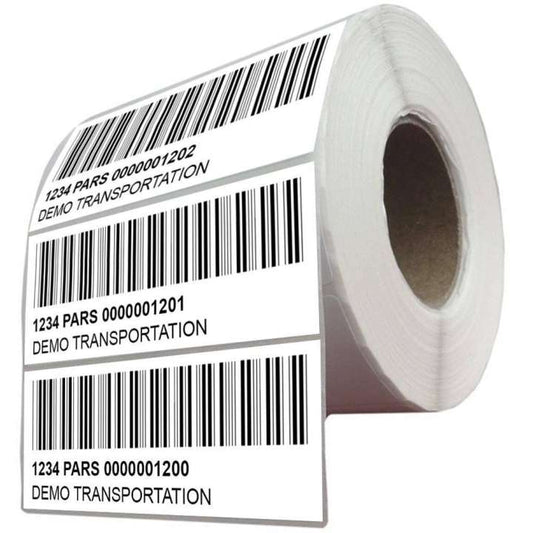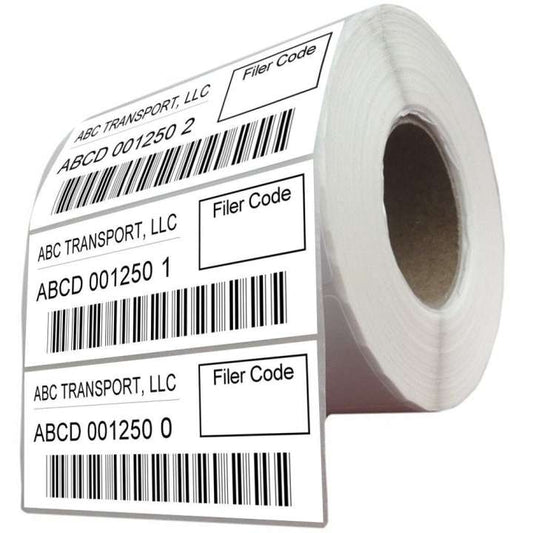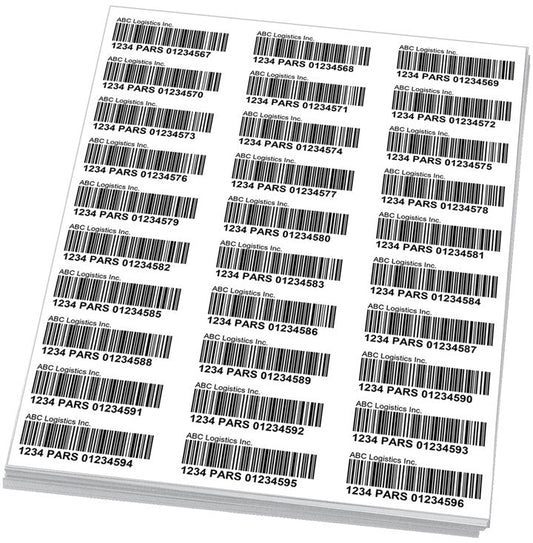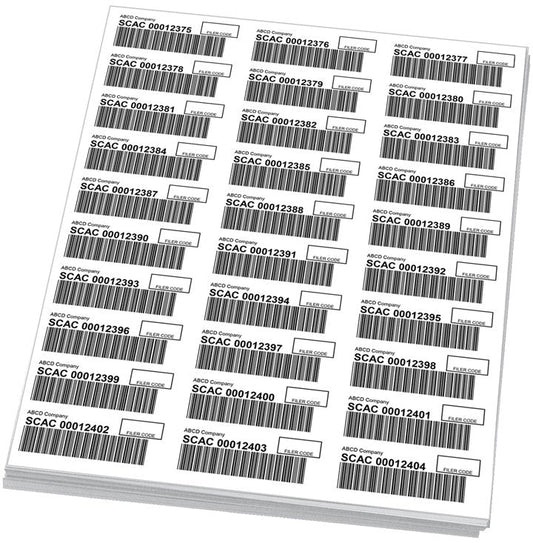
BorderPrint Frequently Asked Questions
Discover the answers cross-border you've been searching for! Our comprehensive BorderPrint FAQ page is here to address your questions, guiding you seamlessly through the intricate world of border crossing as a highway carrier and to ensure your cross-border operation is a success.
Collapsible content
What is the difference between PAPS and PARS?
The difference between PAPS (Pre-Arrival Processing System) and PARS (Pre-Arrival Review System) bar code labels is that PAPS are used to enter commercially into the United States while PARS are used to enter commercially into Canada.
PAPS bar code labels also use a different bar code format than PARS bar code labels. PAPS uses the system standard Code 39 bar code, while PARS uses Code 128.
What is PAPS in trucking?
In trucking, a Pre-Arrival Processing System (PAPS) is a system that allows carriers and trucking companies to submit electronic data about their shipments to U.S Customs and Border Protection (CBP) before the goods arrive at the border. One way to accomplish this is by using PAPS barcode labels. These labels are affixed to each shipment and include a unique barcode that holds the electronic manifest data and shipment information, such as the carrier, consignee, commodity, and route of the shipment.
Once the carrier or trucking company scans the barcode at the designated PAPS location, the electronic data will be sent to CBP, which will then review it and either approve the shipment for entry or flag it for additional inspection. This allows CBP to clear the shipment before it reaches the border, reducing delays and increasing efficiency.
PAPS barcode labels help the trucking companies to have more visibility and predictability in the border crossing process. The system also allows the companies to take corrective actions in the event of any errors by scanning the labels again , reducing the risk of delays or penalties. It also helps them to comply with the laws and regulations by submitting the right documents and data in a timely manner.
What is PARS in trucking?
Pre-Arrival Review System (PARS) in trucking is a system that allows carriers and trucking companies to submit electronic data about their cross-border shipments to the Canada Border Services Agency (CBSA) before the goods arrive at the Canadian border. One way to accomplish this is by using PARS barcode labels. These labels are affixed to each shipment and include a unique barcode that holds the electronic manifest data and shipment information, such as the carrier, consignee, commodity, and route of the shipment.
When the truck arrives at the Canadian border, the driver will need to present the barcode to the CBSA for scanning. The CBSA will then use the information encoded in the barcode to clear the shipment before it reaches the border, reducing delays and increasing efficiency. If the shipment has been cleared, CBSA will provide the carrier or trucking company with a PARS release number, indicating that the shipment can proceed to cross the border. In contrast, if the CBSA identifies issues with the shipment, the carrier or trucking company will receive a PARS rejection number, which means that the shipment cannot proceed until the issues have been addressed.
PARS barcode labels are a useful tool for trucking companies because they provide a more efficient and predictable process for crossing the Canadian border. By using these labels, trucking companies can submit the right documents and data in a timely manner, helping them to reduce the risk of delays and comply with Canadian laws and regulations.
How do you get PARS stickers?
- Register with the CBSA: First, you will need to register your company with the CBSA as a highway carrier. This involves completing an application form and providing information about your company, including your legal name, business address, and contact information. You may also need to provide proof of insurance and other documents as required by the CBSA.
- Obtain a Business Number (BN): Your trucking company should have a Business Number (BN) assigned by the Canada Revenue Agency (CRA) which is required to complete the carrier registration process. Companies do not need to register with CRA if they are not based in Canada.
- Registering as a Highway Carrier with CBSA: To obtain a non-bonded or bonded highway carrier code with the CBSA, you will need to register your trucking company as a highway carrier. This will involve completing an application form, providing information about your company, and providing proof of insurance, amongst other documents. During the registration process, you will need to specify whether you wish to register as a non-bonded or bonded carrier. As a reminder, a non-bonded carrier is not required to provide a bond (financial guarantee) to the CBSA for the release of cargo and pay duties and taxes, while a bonded carrier needs to provide a bond in order to ensure compliance with CBSA regulations and guarantee payment of duties and taxes.
- Obtain a PARS Barcode Label: Once you have obtained your non-bonded highway carrier code, you will be able to request PARS barcode labels from the CBSA. You can request PARS labels in the form of paper labels or thermal labels, depending on your preference. Be aware that you may have to pay a fee for the labels.
- PARS Submission: After you have the PARS barcode labels and the truck is loaded and ready to depart, you or your customs broker can submit the PARS request via the CBSA's electronic data interchange (EDI) system and will be provided with a PARS release or rejection number. This must be done before the truck arrives to the border point.
It's important to note that these steps may vary based on your location and specific requirements of the CBSA, and that step 3 may have been required depending on the regulations in place at the time and the requirement of your company operations. It's recommended you to contact the CBSA for more information on the process, and seek guidance from a customs broker to assist you through the process.
How do you get PAPS stickers?
As a trucking company, to obtain a Standard Carrier Alpha Code (SCAC) and PAPS barcode labels from the U.S. Customs and Border Protection (CBP), you will need to take the following steps:
- Apply for a SCAC: First, you will need to apply for a SCAC through the National Motor Freight Traffic Association (NMFTA). This application process involves providing information about your company, including your legal name, business address, and contact information, as well as providing proof of insurance and other documents as required by the NMFTA.
- Obtain an Employer Identification Number (EIN): Your trucking company should have an Employer Identification Number (EIN) assigned by the Internal Revenue Service (IRS). This number is required to complete the SCAC registration process.
- Obtain PAPS Barcode Labels: Once you have obtained your SCAC and EIN, you will be able to request PAPS barcode labels from the CBP. These labels are affixed to each shipment and include a unique barcode that holds the electronic manifest data and shipment information, such as the carrier, consignee, commodity, and route of the shipment.
- Submitting Electronic Manifest to CBP: Once the shipment is loaded and ready to depart, you or your customs broker can submit the PAPS manifest electronically via the CBP's system, and this need to be done before the truck arrives to the border point.
It's important to note that these steps may vary based on your location and specific requirements of the CBP. It's recommended you to contact the CBP for more information on the process, and seek guidance from a customs broker to assist you through the process.
What does a PARS number look like?
A PARS (Pre-Arrival Review System) number always starts with an alpha-numeric Highway Carrier Code unique to each highway carrier. (ex. 12AB or 77YY). It is then followed by a unique number, usually as part of a sequence of unique cargo control numbers.
Some highway carriers prefer using the acronym "PARS" in-between the Highway Carrier Code and the sequential number. (ex. 12AB PARS 000955) as this helps carriers easily differentiate between PARS bar code labels and PAPS bar code labels. However, this method is not mandatory.
What does a PAPS number look like?
A PAPS (Pre-Arrival Processing System) number always starts with a four character SCAC (Standard Carrier Alpha Code) unique to each highway carrier. (ex. ABCD). It is then followed by a unique number, usually part of a sequence of unique shipment control numbers. (ex. ABCD 0001234).
Find out U.S. and Canada Cross-Border Requirements
-
U.S. Cross-Border Requirements
U.S. Cross-Border RequirementsOur U.S. CBP Cross-Border Requirements page provides you with vital information and expert insights, simplifying the complexities of international travel, and helping you navigate customs and border procedures with ease.
-
Canada Cross-Border Requirements
Canada Cross-Border RequirementsOur Canada CBSA Cross-Border Requirements page equips you with essential knowledge and practical tips, ensuring a smooth passage through customs and immigration, so you can focus on creating unforgettable memories in the Great White North.
Best Selling Products
-
PARS Barcode Labels (Rolls)
Regular price From $42.00 CADRegular priceUnit price / per -
PAPS Barcode Labels (Rolls)
Regular price From $42.00 CADRegular priceUnit price / per -
PARS Barcode Labels (Sheets)
Regular price From $36.00 CADRegular priceUnit price / per -
PAPS Barcode Labels (Sheets)
Regular price From $36.00 CADRegular priceUnit price / per




